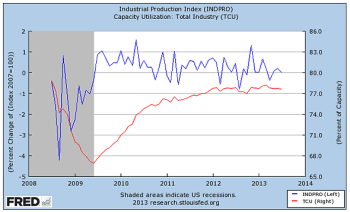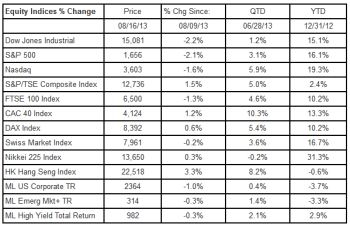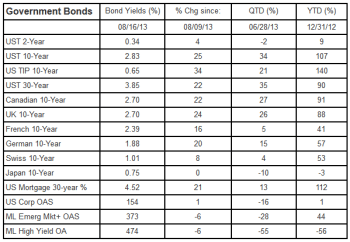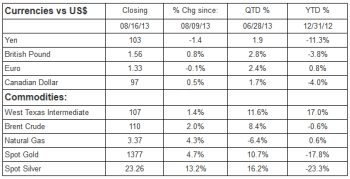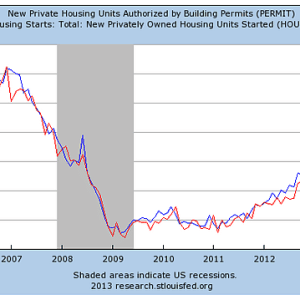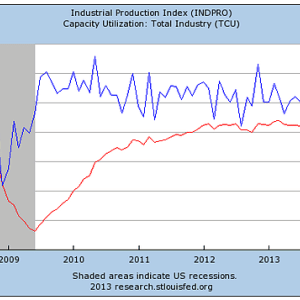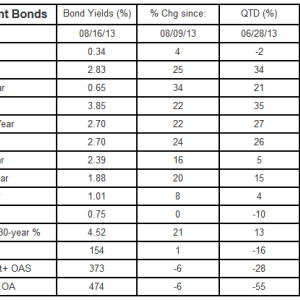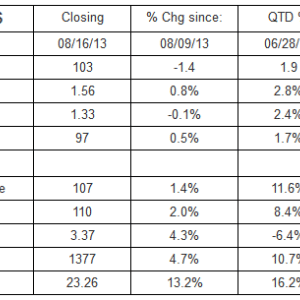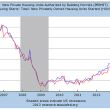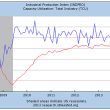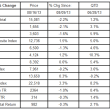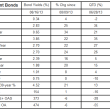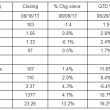John Davidson's Economic Comments: Week ending Aug. 16
This week's economic releases showed that the global economy was firm but not robust. Europe releases showed that the EU appeared to be returning to a path of growth; the U.S. releases were sufficiently strong that it is unlikely to deter the expected Fed tapering. Corporate earnings announcements matched recent history with 72% beating estimates as reported by Factset; forward guidance, on the other hand, disappointed. U.S. equity markets declined, taking the biggest weekly price drop in a year. Elsewhere, equity markets were mixed. Bond markets declined; government yields rose across the board. The riskiest credit market spreads narrowed, but not enough to overcome the rise in government yields. Energy and metal commodity prices rose on the week. The U.S. dollar was mixed.
Perspective:
The U.S. economy appears to be restricted to a narrow channel. On one bank the growth remains discouragingly slow, too slow to allay concerns that the economy will grow without the monetary stimulus provided by the Fed's bond purchase program. On the other bank, the firmness of the releases is sufficient to allow the Fed to start to remove some of that stimulus. The decision will be data-dependent, keeping the U.S. economy well within the specified channel. The Fed's actions will become more transparent in the coming months.
The U.S. has been fortunate to have Bernanke as Fed chairman. Having studied the mistakes of the premature tightening of the Japanese Central Bank, he understood the need for continued monetary accommodation. Secondly, with rates at zero, he instituted unconventional approaches to that accommodation in the form of quantitative easing. Finally, Bernanke increased the transparency of the Fed. With his term ending, the Obama Administration will appoint his successor. Two strong candidates have emerged: Larry Summers and Janet Yallen. Both qualified and able to be good Fed chairs. While Bernanke oversaw major accommodation, the next chair will oversee withdrawal of that accommodation. Who can best do that?
On a personal note, in celebration of my birthday, two of our kids are joining us for a short cruise on Penobscot Bay — necessitating early release of these Comments.
Economic Releases:
Housing Starts (red in the chart) and Permits (blue in the chart) were a little better in July, but they were not robust enough to carry the U.S. economy through recovery when the Fed removes accommodation. Starts were 896,000 and Permits were 943,000; both were in line with expectations. The chart shows that the release was higher than June's numbers, but well below the pre-recession high and below the recovery highs reached earlier this year. In other housing news, the NAHB Housing Market Index rose three points to 59, the highest reading for home builders since 2005.
US Industrial Production (blue in the chart) was flat in July and Capacity Utilization (red in the chart) slipped a tick to 77.6%. Both numbers were on the low end of the range of expectations.
Other Economic Releases
U.S. Retail Sales rose +0.2% in July and Sales for June were revised up two ticks to +0.6%. Without the more volatile automobile component, Retail Sales x-autos rose +0.5%. 2nd quarter Non-farm Productivity rose +0.9% and Unit Labor Costs rose 1.4% (both Seasonally Adjusted Annual Rates). Weekly Initial Jobless Claims fell 15,000 to 320,000, bringing the four-week average down to 332,000. The University of Michigan Consumer Sentiment Survey for August fell five points to 80.0. Inflationary pressures have been well contained; CPI for July rose just +0.2% for both the headline number and the core (less food and energy).
Industrial Production in the European Union rose +0.7%. The EU GDP Flash report for Q2 was +0.3%, with solid gains from France(+0.5%), Germany (+0.7%), Finland(+0.7%), and Portugal(+1.1%)! In Germany the ZEW Survey for both Current Conditions and Business Expectations rose in August. In the UK, the Unemployment rate remained at 7.8%, CPI was flat, and Retail Sales rose 1.1% in July.
Industrial Production in India fell -2.2% in June.
Equities Markets:
U.S. equity markets fell on the week. Elsewhere, the equity results were mixed; stocks in Canada, Germany, France, Japan and Hong Kong were higher; stocks in the UK and Switzerland were lower on the week. Factset reported that, with 464 of the S&P 500 companies having reported, 72% beat the mean Q2 estimates and 53% beat top line estimates. If the 2.1% Q2 growth rate continues it would be the third consecutive quarter of growth for the S&P 500 Index.
Bond Markets:
Fears of tapering in the U.S. hit bond markets world wide. Credit spreads for the riskiest securities widened, but not enough to offset the rise in government bond yields.
Currencies & Commodities:
The U.S. dollar was mixed, falling against the Pound and Looney, but rising against the Yen and Euro. Commodity prices rose in both the energy and metals space.
Event Date
Address
United States







